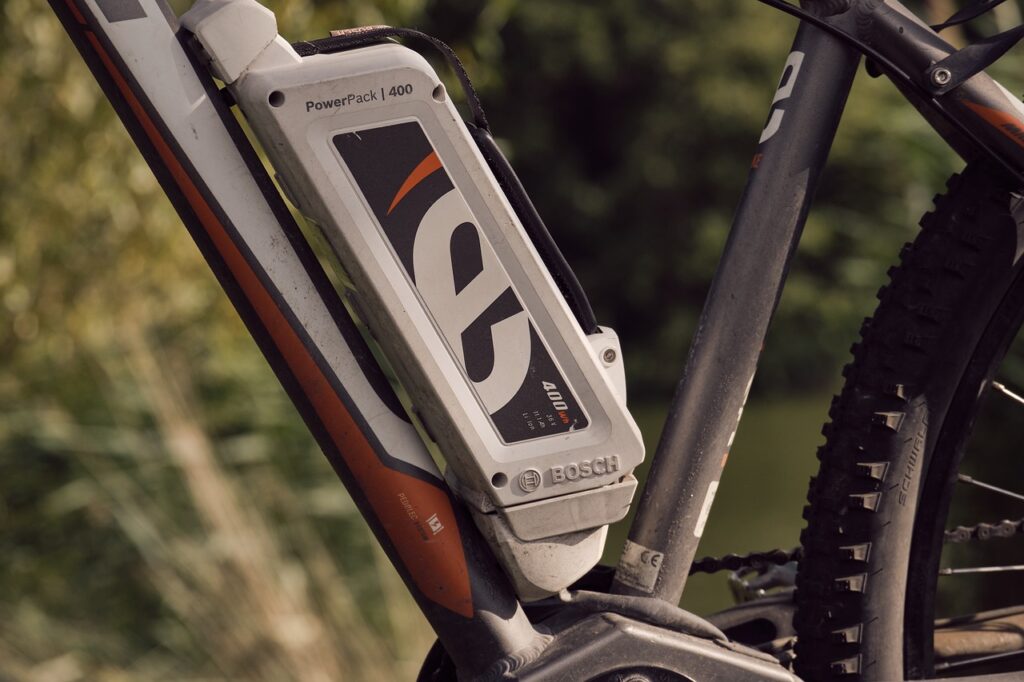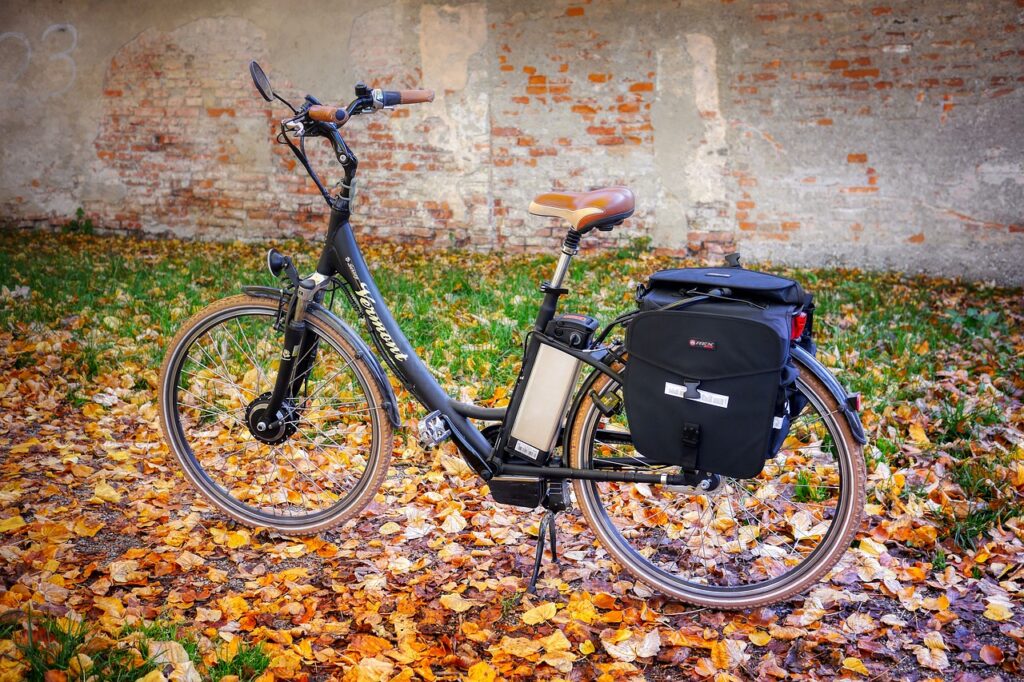You’re in for a treat as you explore the fascinating world of e-bikes with a focus on outdoor and off-road applications. Just imagine the freedom of hitting the trail or setting up camp after a thrilling ride, but only if you have enough battery! Fear not, this handy guide will shift your outdoor adventures into high gear by helping you learn how to easily carry a spare e-bike battery. Not only will this increase your journey’s distance but also your fun, making your e-bike escapades infinitely more enjoyable and worry-free. You’ll gain practical insights tailored for beginners, answering common questions, and addressing your outdoor needs. So, strap up and get ready for the ride!

This image is property of pixabay.com.
Understanding E-bike Batteries
As an e-bike user, it’s important to have a strong understanding of your e-bike’s battery. This is the heart of your e-bike and plays a major role in your overall riding experience.
Types of e-bike batteries
There are mainly three types of e-bike batteries: lead-acid, nickel-metal hydride (NiMH), and lithium-ion batteries. Lead-acid batteries are cheap but heavy and have a short lifespan. NiMH batteries are more efficient and longer-lasting than lead-acid ones. Lithium-ion batteries, which are the most common type in modern e-bikes, are lightweight, durable, and can handle high-performance situations.
Battery capacity and range
The battery’s capacity, measured in ampere-hours (Ah), determines the range of your e-bike – the higher the capacity, the longer the range. Most e-bikes have a range between 15 to 60 miles, though this varies based on factors such as the terrain, rider’s weight, and biking mode.
Weight and size of batteries
E-bike batteries also come in various weights and sizes. Lightweight and compact batteries enhance your bike’s maneuverability and speed, while heavier, bigger batteries usually offer larger capacity and range but create a bulkier e-bike.
Importance of Carrying Spare E-bike Batteries
Having spare batteries for your e-bike enhances your bike riding experience, especially during long trips.
Extended ride duration
With spare batteries, you extend your riding duration significantly – a boon for long, adventurous bike trips or commutes. You’ll be capable of covering larger distances without worrying about your e-bike’s battery life.
Emergency backup
Spare batteries serve as great emergency backups. In case of unforeseen circumstances like a battery failure, having a spare battery will keep you on the road.
Off-road and trail riding necessities
If you’re a fan of off-road or trail rides, carrying spare batteries is crucial. These kinds of rides often involve rough terrains and long distances that require extra battery power to navigate successfully.
Battery degradation and replacement
All batteries degrade over time, affecting their efficiency and capacity. Having spare batteries allows you either to replace an aging one or to supplement it when needed.
Choosing Suitable Spare Batteries
Selecting the right spare batteries for your e-bike involves careful consideration.
Compatible battery models
First, ensure your spare batteries match your e-bike in terms of compatibility. Check your e-bike’s manual or consult the manufacturer for appropriate battery models.
Choosing based on capacity and weight
Pick spare batteries based on capacity and weight, depending on your needs. If you prioritize long rides, go for high-capacity batteries. However, if you prefer speed and agility, lighter batteries could be your best bet.
Importance of battery quality
Finally, don’t compromise on battery quality. Purchasing high-quality batteries ensures longevity, reliability, and overall better performance for your e-bike.
Preparation Before Carrying Spare Batteries
Preparations are necessary to carry spare batteries efficiently and safely.
Checking the battery health
Before packing the batteries, check their health. Confirm that they are fully functional and free from physical damages.
Fully charging the battery
For maximum benefit, charge your spare batteries fully before the ride. This ensures they are ready for use whenever needed.
Secure packaging for protection
Pack your batteries securely to avoid any potential damage during the ride. Use protective covers or cases to shield them from impact or environmental factors.

This image is property of pixabay.com.
Methods for Carrying Spare Batteries
There are several ways to carry spare e-bike batteries securely and comfortably.
E-bike’s built-in battery holder
Some e-bikes come outfitted with an additional battery holder, a perfect spot for carrying your spare battery.
Specialized e-bike backpacks
Specialized e-bike backpacks are also a great choice for carrying spare batteries. These backpacks often have padded compartments for batteries, ensuring their safety during the ride.
Using pannier bags attached to the bike
Pannier bags, attached to the rear rack of your e-bike, provide ample space for carrying spare batteries. They are easy to access and balance the added weight on your e-bike effectively.
Safety Precautions When Carrying Spare Batteries
Carrying spare batteries also demands precautions for safety reasons.
Avoiding extreme temperatures
Batteries should not be exposed to extreme hot or cold temperatures. This can lead to battery damage, decreased performance, and even safety risks.
Avoiding physical damage
Spare batteries should be safeguarded from physical damage during your ride. Always store batteries in a secure case and place them where they won’t be subjected to impact.
Storing in fireproof containers
To mitigate the risk of fire, it’s recommended to store e-bike batteries in a fireproof container during transportation.

This image is property of pixabay.com.
Maintaining Spare E-bike Batteries
proper maintenance prolongs the life of your spare batteries and keeps them at peak performance.
Regular charging cycles
Regularly charging and using your spare batteries can keep them healthy. Leaving batteries unused for long periods can decrease their lifespan.
Preventing over-discharge
It’s important to prevent your batteries from getting fully discharged. Over-discharge can harm the battery’s capacity and degrade its performance over time.
Routine health check-ups
Regular check-ups can help identify any potential issues in your spare batteries. Monitoring the performance and health of your batteries will ensure they last longer.
Useful Accessories for Carrying Spare Batteries
When it comes to carrying spare batteries, some accessories can make the process easier and more efficient.
Battery cases and covers
Battery cases and covers provide better protection for your batteries against bumps, drops, and weather elements.
Specialized e-bike backpacks
Again, specialized e-bike backpacks are excellent for carrying spare batteries. They provide padded compartments specifically for this purpose, adding a layer of safety and ease.
Pannier bags and racks
Pannier bags, along with their accompanying racks, offer plenty of storage space for your spare batteries while distributing the additional weight across your e-bike.
Fireproof battery bags
Fireproof battery bags are crucial for battery safety. They contain any potential fires that may come from a malfunctioning battery, offering an extra level of safety.
Tips When Travelling with Spare E-bike Batteries
Travelling with spare e-bike batteries, especially during air travel, comes with its own set of regulations and tips.
Regulations on batteries in check-in and carry-on baggage
Always check the airline’s regulations on carrying spare batteries. Typically, batteries cannot be packed in checked luggage and must be carried in your carry-on bag.
Tips for international travel
For international travel, always check the local regulations related to battery disposal and recycling. Also, be aware of any restrictions on battery types or sizes.
Carrying chargers and adapter plugs
Always carry your e-bike charger and a suitable adapter plug. This guarantees you can recharge your batteries no matter where you are.
Troubleshooting Common Battery Problems
E-bike batteries can sometimes face issues, and knowing how to troubleshoot them can drastically enhance your biking experience.
Dealing with battery drain
If your battery is draining faster than usual, check if there’s any physical damage. Also, monitor your e-bike’s performance and terrain mode.
Fixing charger issues
Charger issues can often be resolved by checking the connection between the charger and the battery. If issues persist, consider consulting with a professional or ordering a replacement charger.
Identifying and replacing defective batteries
If a battery consistently gives you problems, it might be defective. This could be due to various reasons ranging from manufacturing defects to misuse. In such cases, it’s best to replace the defective battery with a new one to maintain optimal performance of your e-bike.

